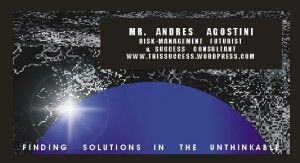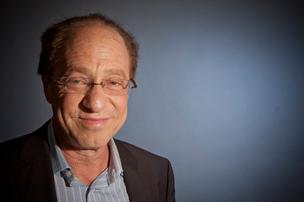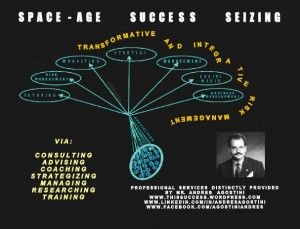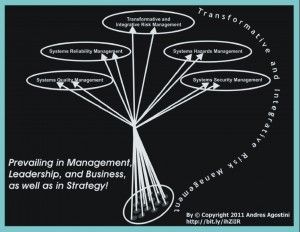FEBRUARY 15 AND 16/2014 LIST OF UPDATES. By Mr. Andres Agostini at The Future of Scientific Management, Today! At http://lnkd.in/bYP2nDC
New live-cell printing technology improves on inkjet printing
http://www.kurzweilai.net/new-live-cell-printing-technology-…t-printing
Capturing ultrasharp images of multiple cell components simultaneously
http://www.kurzweilai.net/capturing-ultrasharp-images-of-mul…ltaneously
Red-light-sensitive protein discovery enables more complex studies of neuron interactions
http://www.kurzweilai.net/red-light-sensitive-protein-discov…teractions
New self-healing polymers require no chemicals or catalysts
http://www.kurzweilai.net/new-self-healing-polymers-require-…-catalysts
First map of core white-matter connections of human brain developed at USC
http://www.kurzweilai.net/first-map-of-core-white-matter-con…ped-at-usc
Futurists Explore the Next Horizon
http://www.wfs.org/futurist/2013-issues-futurist/november-de…xt-horizon
6 key trends that are accelerating the adoption of technology in higher education
http://www.impactlab.net/2014/02/11/6-key-trends-that-are-ac…education/
Silicon Valley’s Next Big Goal: Fixing Our Broken Food System
http://www.fastcompany.com/3025602/rebuilding-big-food-agloc…vest-power
5 Famous Entrepreneurs Who Learned From Their First Spectacular Failures
http://www.fastcompany.com/3026253/dialed/5-famous-entrepren…r-failures
Can Creativity Really Be Taught?
http://www.fastcompany.com/3026327/leadership-now/can-creati…-be-taught
Belgian law on euthanasia for children, with no age limit, will be first in world
http://www.theguardian.com/world/2014/feb/12/belgium-legalis…CMP=twt_gu
This Google exec’s success shows how it pays off to invest in talent
http://qz.com/176195/this-google-execs-success-shows-how-it-…in-talent/
Plastic shopping bags make a fine diesel fuel, researchers report
http://phys.org/news/2014-02-plastic-bags-fine-diesel-fuel.html
China’s ‘Jade Rabbit’ lunar rover declared dead: media
http://phys.org/news/2014-02-china-jade-rabbit-lunar-rover.html
Stirring-up atomtronics in a quantum circuit
http://phys.org/news/2014-02-stirring-up-atomtronics-quantum-circuit.html
Studio diip creates a fish-driven robot
http://www.engineering.com/DesignerEdge/DesignerEdgeArticles…robot.aspx
Far-reaching radars, laser-guided rockets and powerful new sensors are taking center stage this week as Raytheon shows off its latest technology at the Singapore Airshow.
http://www.raytheon.com/newsroom/feature/rtn14_singapore/index.html
Can’t Find a Steve Jobs? Hire an Innovation Organizer Instead
http://blogs.hbr.org/2014/02/cant-find-a-steve-jobs-hire-an-…Socialflow
Strange Star Chemistry May Reveal Secrets of Planetary Disks
http://www.space.com/24666-strange-star-chemistry-planet-for…3_18478324
Android’s ‘Open’ System Has Limits
http://online.wsj.com/article/SB1000142405270230488840457937…html?dsk=y
Asian Stocks Drop After Longest Streak of Gains This Year
http://www.bloomberg.com/news/2014-02-13/asian-stock…-year.html
Prediction: In the next 25 years [timeline year 2035], synthetic biology — the creation of life from nonliving chemicals designed on a computer — could produce thousands of synthetic genomes and life-forms not yet imagine
http://www.wfs.org/content/futurist/january-february-2012-vo…redictions
World’s first genetically modified babies born
http://thechangewithin.net/2014/02/07/worlds-first-genetical…bies-born/
World asleep as China tightens deflationary vice
http://www.telegraph.co.uk/finance/comment/10634339/World-as…-vice.html
Russia Tests “Total Surveillance” at the Sochi Olympics
http://mag.newsweek.com/2014/02/14/russia-tests-total-survei…mpics.html
The Dash Builds Wearable Fitness Sensors Into The Headphones You’re Using Anyway
The Dash Builds Wearable Fitness Sensors Into The Headphones You’re Using Anyway
Microsoft’s new task force will tackle Internet of Things and wearable tech
http://www.techradar.com/news/internet/microsoft-s-new-task-…ch-1223902
Psychologists Predict The Demise of Social Networks
http://socialtimes.com/psychologists-predict-demise-social-networks_b142473
Disillusioned hedonist shoppers
http://www.economist.com/blogs/schumpeter/2014/02/luxury-goods-market
This Is What Your Face Will Look Like In 2060
http://www.fastcoexist.com/3026290/futurist-forum/this-is-wh…ke-in-2060
A Glimpse At The Mind-Reading Office Of The Future
http://www.fastcodesign.com/3024164/a-glimpse-inside-the-office-of-the-future
Awesome, Immersive Exhibition Shows How Architecture Can Shape Your Senses
http://www.wired.com/design/2014/02/brilliant-new-ways-experience-archtiecture/
Tomorrow’s Spacecraft Could Be Made of the Same Bone You Are
http://gizmodo.com/tomorrows-spacecraft-could-be-made-of-the…1521614272
It’s official: Apple sells more computers than all Windows PCs combined
http://qz.com/176643/its-official-apple-sells-more-computers…-combined/
Why Google Is Investing In Deep Learning
http://www.fastcolabs.com/3026423/why-google-is-investing-in-deep-learning
Surround Computing Is About to Change Our Lives
http://techonomy.com/2014/02/surround-computing-change-lives/
We’re One Step Closer to Nuclear Fusion Energy
http://www.wired.com/wiredscience/2014/02/fusion-power-not-yet/
Stop “Fixing” Women and Start Fixing Managers
http://blogs.hbr.org/2014/02/stop-fixing-women-and-start-fix…Socialflow
Singapore is becoming a favorite stop for China’s top tech firms
http://thenextweb.com/asia/2014/02/13/singapore-is-becoming-…ce=Twitter
Cybersecurity guidelines for companies are unveiled by White House
http://www.latimes.com/business/la-fi-cyber-security-20140213,0,3027325.story#ixzz2tBH36ygw
There is no more B2B or B2C: It’s Human to Human, #H2H
Facebook Testing ‘Water Taxi’ to Shuttle Employees From San Francisco
http://mashable.com/2014/02/12/facebook-ferry/?utm_cid=mash-com-Tw-main-link
A future cochlear implant with no exterior hardware required
http://www.kurzweilai.net/a-future-cochlear-implant-with-no-…e-required
Scientists achieve fuel gain exceeding unity in confined fusion implosion
http://www.kurzweilai.net/scientists-achieve-fuel-gain-excee…-implosion
Your virtual avatar can impact your real-world behavior, researchers suggest
http://www.kurzweilai.net/your-virtual-avatar-can-impact-you…rs-suggest
Here’s the enormous hangar Google bought to fill with robots
http://qz.com/176551/heres-the-enormous-hangar-google-bought…th-robots/
45 Million Smartwatches Expected to Ship by 2017
http://mashable.com/2014/02/13/wearable-device-shipments/
The lasers fuelling hopes of unlimited, clean nuclear energy
http://www.independent.co.uk/news/science/the-lasers-fuellin…24237.html
Here’s What Would Make Google’s Smartwatch Awesome
QUOTATION(S): “…If you are not failing frequently, you are not succeeding enough…” AND “…Denial is tragic. Delay is deadly …” AND “…It has become appallingly obvious that our technology has exceeded our humanity … We shall require a substantially new manner of thinking if mankind is to survive.…” AND “…To solve a very complicated problem, you generally need a fairly complicated solution [in advance]…”
CITATION(S): “…Funny thing, our mind. The moment our software catches up, the mind seems to travel beyond the capability of the software .… [However,] Our minds focus on renditions, darling, not the underlying algorithm. Your analysts and programmers have to deal with algorithm that produces new renditions…” AND “…In a few hundred years, when the story of our [current] time is written from a long-term perspective, it is likely that the most important event those historians will see is not technology, not the Internet, not e-commerce [not ‘social media’ ─ so-called]. IT IS AN UNPRECEDENTED CHANGE IN THE HUMAN CONDITION. FOR THE FIRST TIME ─ LITERALLY ─ SUBSTANTIAL AND GROWING NUMBERS OF PEOPLE HAVE CHOICES. FOR THE FIRST TIME, THEY WILL HAVE TO MANAGE THEMSELVES. AND SOCIETY IS TOTALLY UNPREPARED FOR IT…” AND “…The political world promises change and the digital world delivers it. And when that change potentially affects our privacy and freedom, we should all pay attention. This is a fascinating, provocative and thoroughly readable look into an uncertain future…”
NEWEST, PRACTICAL PRINCIPALS (TENETS) TO SEIZE SUSTAINABLE PROFESSIONAL, MANAGERIAL AND BUSINESS SUCCESS: (11) Cryogenize the infamous illiterate by own choice and reincarnate ASAP (multiverse teleporting out of a warped / wormed passage) Da Vinci, Bacon, Newton, Goethe, Bonaparte, Edison, Franklyn, Churchill, Einstein, and Feynman. (12) Organize relationships into voluntary associations that are mutually beneficial and accountable for contributing productively to the surrounding community. (13) Practice the central rule of good strategy, which is to know and remain true to your core business and invest for leadership and R&D+Innovation. (14) Kaisen, SixSigma, Lean, LeanSigma, “…Reliability Engineer…” (the latter as solely conceived and developed by Procter & Gamble and Los Alamos National Laboratories) it all unthinkably and thoroughly by recombinant, a là Einstein Gedanke-motorized judgment (that is to say: Einsteinian Gedanke [“…thought experiments…”]. (15) Provide a road-map / blueprint for drastically compressing (‘crashing’) the time’s ‘reticules’ it will take you to get on the top of your tenure, nonetheless of your organizational level. (16) With the required knowledge and relationships embedded in organizations, create support for, and carry out transformational initiatives.
BOOK(S): Transcend: Nine Steps to Living Well Forever by Ray Kurzweil and Terry Grossman. ISBN-13: 978–1605292076
Regards,
Mr. Andres Agostini
Risk-Management Futurist
and Success Consultant
http://lnkd.in/bYP2nDC
New live-cell printing technology improves on inkjet printing
http://www.kurzweilai.net/new-live-cell-printing-technology-…t-printing
Capturing ultrasharp images of multiple cell components simultaneously
http://www.kurzweilai.net/capturing-ultrasharp-images-of-mul…ltaneously
Red-light-sensitive protein discovery enables more complex studies of neuron interactions
http://www.kurzweilai.net/red-light-sensitive-protein-discov…teractions
New self-healing polymers require no chemicals or catalysts
http://www.kurzweilai.net/new-self-healing-polymers-require-…-catalysts
First map of core white-matter connections of human brain developed at USC
http://www.kurzweilai.net/first-map-of-core-white-matter-con…ped-at-usc
Futurists Explore the Next Horizon
http://www.wfs.org/futurist/2013-issues-futurist/november-de…xt-horizon
6 key trends that are accelerating the adoption of technology in higher education
http://www.impactlab.net/2014/02/11/6-key-trends-that-are-ac…education/
Silicon Valley’s Next Big Goal: Fixing Our Broken Food System
http://www.fastcompany.com/3025602/rebuilding-big-food-agloc…vest-power
5 Famous Entrepreneurs Who Learned From Their First Spectacular Failures
http://www.fastcompany.com/3026253/dialed/5-famous-entrepren…r-failures
Can Creativity Really Be Taught?
http://www.fastcompany.com/3026327/leadership-now/can-creati…-be-taught
Belgian law on euthanasia for children, with no age limit, will be first in world
http://www.theguardian.com/world/2014/feb/12/belgium-legalis…CMP=twt_gu
This Google exec’s success shows how it pays off to invest in talent
http://qz.com/176195/this-google-execs-success-shows-how-it-…in-talent/
Plastic shopping bags make a fine diesel fuel, researchers report
http://phys.org/news/2014-02-plastic-bags-fine-diesel-fuel.html
China’s ‘Jade Rabbit’ lunar rover declared dead: media
http://phys.org/news/2014-02-china-jade-rabbit-lunar-rover.html
Stirring-up atomtronics in a quantum circuit
http://phys.org/news/2014-02-stirring-up-atomtronics-quantum-circuit.html
Studio diip creates a fish-driven robot
http://www.engineering.com/DesignerEdge/DesignerEdgeArticles…robot.aspx
Far-reaching radars, laser-guided rockets and powerful new sensors are taking center stage this week as Raytheon shows off its latest technology at the Singapore Airshow.
http://www.raytheon.com/newsroom/feature/rtn14_singapore/index.html
Can’t Find a Steve Jobs? Hire an Innovation Organizer Instead
http://blogs.hbr.org/2014/02/cant-find-a-steve-jobs-hire-an-…Socialflow
Strange Star Chemistry May Reveal Secrets of Planetary Disks
http://www.space.com/24666-strange-star-chemistry-planet-for…3_18478324
Android’s ‘Open’ System Has Limits
http://online.wsj.com/article/SB1000142405270230488840457937…html?dsk=y
Asian Stocks Drop After Longest Streak of Gains This Year
http://www.bloomberg.com/news/2014-02-13/asian-stock…-year.html
Prediction: In the next 25 years [timeline year 2035], synthetic biology — the creation of life from nonliving chemicals designed on a computer — could produce thousands of synthetic genomes and life-forms not yet imagine
http://www.wfs.org/content/futurist/january-february-2012-vo…redictions
World’s first genetically modified babies born
http://thechangewithin.net/2014/02/07/worlds-first-genetical…bies-born/
World asleep as China tightens deflationary vice
http://www.telegraph.co.uk/finance/comment/10634339/World-as…-vice.html
Russia Tests “Total Surveillance” at the Sochi Olympics
http://mag.newsweek.com/2014/02/14/russia-tests-total-survei…mpics.html
The Dash Builds Wearable Fitness Sensors Into The Headphones You’re Using Anyway
The Dash Builds Wearable Fitness Sensors Into The Headphones You’re Using Anyway
Microsoft’s new task force will tackle Internet of Things and wearable tech
http://www.techradar.com/news/internet/microsoft-s-new-task-…ch-1223902
Psychologists Predict The Demise of Social Networks
http://socialtimes.com/psychologists-predict-demise-social-networks_b142473
Disillusioned hedonist shoppers
http://www.economist.com/blogs/schumpeter/2014/02/luxury-goods-market
This Is What Your Face Will Look Like In 2060
http://www.fastcoexist.com/3026290/futurist-forum/this-is-wh…ke-in-2060
A Glimpse At The Mind-Reading Office Of The Future
http://www.fastcodesign.com/3024164/a-glimpse-inside-the-office-of-the-future
Awesome, Immersive Exhibition Shows How Architecture Can Shape Your Senses
http://www.wired.com/design/2014/02/brilliant-new-ways-experience-archtiecture/
Tomorrow’s Spacecraft Could Be Made of the Same Bone You Are
http://gizmodo.com/tomorrows-spacecraft-could-be-made-of-the…1521614272
It’s official: Apple sells more computers than all Windows PCs combined
http://qz.com/176643/its-official-apple-sells-more-computers…-combined/
Why Google Is Investing In Deep Learning
http://www.fastcolabs.com/3026423/why-google-is-investing-in-deep-learning
Surround Computing Is About to Change Our Lives
http://techonomy.com/2014/02/surround-computing-change-lives/
We’re One Step Closer to Nuclear Fusion Energy
http://www.wired.com/wiredscience/2014/02/fusion-power-not-yet/
Stop “Fixing” Women and Start Fixing Managers
http://blogs.hbr.org/2014/02/stop-fixing-women-and-start-fix…Socialflow
Singapore is becoming a favorite stop for China’s top tech firms
http://thenextweb.com/asia/2014/02/13/singapore-is-becoming-…ce=Twitter
Cybersecurity guidelines for companies are unveiled by White House
http://www.latimes.com/business/la-fi-cyber-security-20140213,0,3027325.story#ixzz2tBH36ygw
There is no more B2B or B2C: It’s Human to Human, #H2H
Facebook Testing ‘Water Taxi’ to Shuttle Employees From San Francisco
http://mashable.com/2014/02/12/facebook-ferry/?utm_cid=mash-com-Tw-main-link
A future cochlear implant with no exterior hardware required
http://www.kurzweilai.net/a-future-cochlear-implant-with-no-…e-required
Scientists achieve fuel gain exceeding unity in confined fusion implosion
http://www.kurzweilai.net/scientists-achieve-fuel-gain-excee…-implosion
Your virtual avatar can impact your real-world behavior, researchers suggest
http://www.kurzweilai.net/your-virtual-avatar-can-impact-you…rs-suggest
Here’s the enormous hangar Google bought to fill with robots
http://qz.com/176551/heres-the-enormous-hangar-google-bought…th-robots/
45 Million Smartwatches Expected to Ship by 2017
http://mashable.com/2014/02/13/wearable-device-shipments/
The lasers fuelling hopes of unlimited, clean nuclear energy
http://www.independent.co.uk/news/science/the-lasers-fuellin…24237.html
Here’s What Would Make Google’s Smartwatch Awesome
QUOTATION(S): “…If you are not failing frequently, you are not succeeding enough…” AND “…Denial is tragic. Delay is deadly …” AND “…It has become appallingly obvious that our technology has exceeded our humanity … We shall require a substantially new manner of thinking if mankind is to survive.…” AND “…To solve a very complicated problem, you generally need a fairly complicated solution [in advance]…”
CITATION(S): “…Funny thing, our mind. The moment our software catches up, the mind seems to travel beyond the capability of the software .… [However,] Our minds focus on renditions, darling, not the underlying algorithm. Your analysts and programmers have to deal with algorithm that produces new renditions…” AND “…In a few hundred years, when the story of our [current] time is written from a long-term perspective, it is likely that the most important event those historians will see is not technology, not the Internet, not e-commerce [not ‘social media’ ─ so-called]. IT IS AN UNPRECEDENTED CHANGE IN THE HUMAN CONDITION. FOR THE FIRST TIME ─ LITERALLY ─ SUBSTANTIAL AND GROWING NUMBERS OF PEOPLE HAVE CHOICES. FOR THE FIRST TIME, THEY WILL HAVE TO MANAGE THEMSELVES. AND SOCIETY IS TOTALLY UNPREPARED FOR IT…” AND “…The political world promises change and the digital world delivers it. And when that change potentially affects our privacy and freedom, we should all pay attention. This is a fascinating, provocative and thoroughly readable look into an uncertain future…”
NEWEST, PRACTICAL PRINCIPALS (TENETS) TO SEIZE SUSTAINABLE PROFESSIONAL, MANAGERIAL AND BUSINESS SUCCESS: (11) Cryogenize the infamous illiterate by own choice and reincarnate ASAP (multiverse teleporting out of a warped / wormed passage) Da Vinci, Bacon, Newton, Goethe, Bonaparte, Edison, Franklyn, Churchill, Einstein, and Feynman. (12) Organize relationships into voluntary associations that are mutually beneficial and accountable for contributing productively to the surrounding community. (13) Practice the central rule of good strategy, which is to know and remain true to your core business and invest for leadership and R&D+Innovation. (14) Kaisen, SixSigma, Lean, LeanSigma, “…Reliability Engineer…” (the latter as solely conceived and developed by Procter & Gamble and Los Alamos National Laboratories) it all unthinkably and thoroughly by recombinant, a là Einstein Gedanke-motorized judgment (that is to say: Einsteinian Gedanke [“…thought experiments…”]. (15) Provide a road-map / blueprint for drastically compressing (‘crashing’) the time’s ‘reticules’ it will take you to get on the top of your tenure, nonetheless of your organizational level. (16) With the required knowledge and relationships embedded in organizations, create support for, and carry out transformational initiatives.
BOOK(S): Transcend: Nine Steps to Living Well Forever by Ray Kurzweil and Terry Grossman. ISBN-13: 978–1605292076



